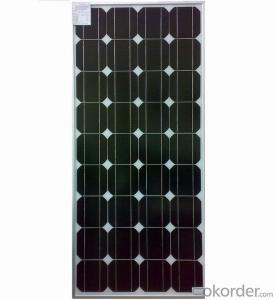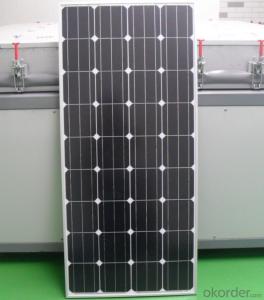255W CNBM Solar Monocrystalline Series (250W—270W)
- Loading Port:
- China main port
- Payment Terms:
- TT OR LC
- Min Order Qty:
- 10000 watt
- Supply Capability:
- 500000 watt/month
OKorder Service Pledge
OKorder Financial Service
You Might Also Like
Item specifice
CNBM Solar Monocrystalline Series III (250W—260W)
Characteristics
Max Power Voltage Vmp(V) | 30.1 | 30.2 | 30.4 |
Max Power Current Imp(A) | 8.32 | 8.44 | 8.55 |
Open Circuit Voltage Voc(V) | 37.5 | 37.6 | 37.7 |
Short Circuit Current Isc(A) | 8.87 | 8.99 | 9.10 |
Max Power Pm(W) | 250 | 255 | 260 |
Temperature Coefficient of Cells
NOCT | 45℃±2℃ | |
Temperature Coefficients of Isc (%/℃) | - 0.0492 | |
Temperature Coefficients of Voc (%/℃) | – 0.3374 | |
Temperature Coefficients of Pmp (%/℃) | –0.4677 | |
Mechanical Data
Dimension | 1638 x 982 x 40 mm | |
Weight | 19.5kg | |
No. of Cells and Connections | 60 (6 x 10) | |
Tolerance | 0~+5W | |
Cell Monocrystalline Cell | 156 x 156 mm | |
Packing | 700 Pcs/40ft(H) Container |
Limits
Operating Temperature | –40 °C to +85°C | |
Storage Temperature | –40 °C to +85°C | |
Max System Voltage | 1000VDC(IEC) / 600VDC(UL) | |
IV Curve

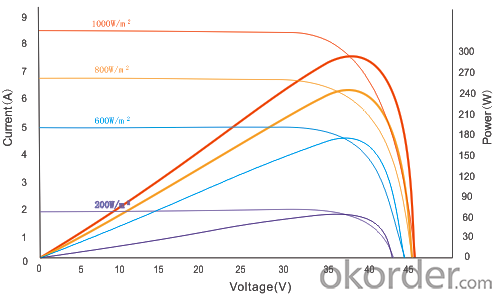
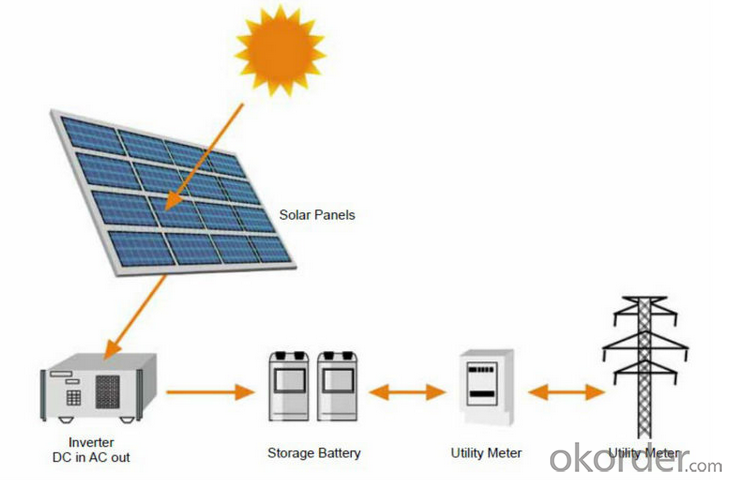
Image
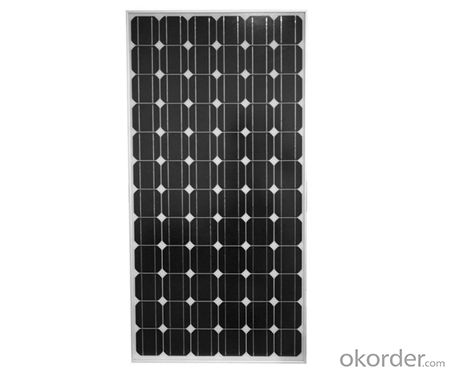
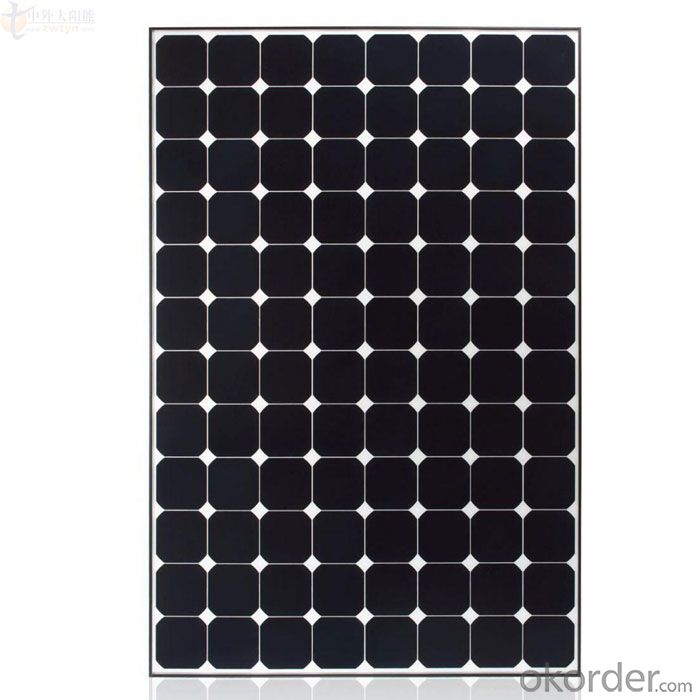
Guarantees
Products Guarantee 12 yrs free from defects in materials and workmanship
Performance Guarantee No less than 90% within 10yrs and no less than 80% within 25yrs
Certificates TUV (IEC61215&IEC61730), VDE(IEC61215&IEC61730), UL, CE
FAQ
1. Q: Do you have your own factory?
A: Yes, we have. Our factory located in Jiangsu province.
2. Q: How can I visit your factory?
A: Before you take off from your country, please let us know. We will show you the way, or arrange time to pick you up if possible.
3. Q: Do you provide free sample?
A: Usually we do not offer free sample
4. Q: Could you print our company LOGO on the nameplate and package?
A: Yes, we can do that.
- Q:Currently being sold today! I know SunPower corp. commercial panels are about 20%.
- New rollable panels are becoming available that don't have to be permanently attached to a surface and that are more resistant to damage than conventional panels. Right now they are also even less efficient than photo cells at about 0%, but the cost factor may make up the difference. Solar thermal is more efficient than photovoltaic cells. They focus sunlight with mirrors onto a pipe containing a liquid which is then heated to it's boiling point. That turns a turbine to produce power or is harnessed in some other way. The panels are cheap compared to photo cells, don't require perfect manufacture or exotic materials, no expensive maintenance and they are much easier to repair. I don't know of any available to individuals yet but there are at least two companies building generating plants in Nevada with this technology. SunPower is about 22% efficient but even at that rate it will take decades to pay for itself and the panels are unlikely to last that long at anything near optimal efficiency. The cost is just too high at present but solar thermal may provide a good alternative until photovoltaic cells mature, if you can cobble together a system. The final link is about a claimed 80% efficient solar cell that even generates some power at night. It's based on nano-technology, like many promising energy developments in batteries, electrolysis and ethanol production. If it works as advertised it should revolutionize solar tech. Eventually.
- Q:Can solar panels be used to power a concert venue?
- Yes, solar panels can be used to power a concert venue. By installing a sufficient number of solar panels, a concert venue can generate enough electricity to meet its power requirements, including stage lighting, sound systems, and other electrical equipment needed for the event. Additionally, solar panels can help reduce the venue's carbon footprint and dependence on traditional energy sources, making it a more sustainable and environmentally friendly choice.
- Q:Please tell me what they are made of and how the materials help the solar cell produce electricity. Im doing a science projects so i need help on knowing all this info. Its a debate, so i need correct information please.I will please need more information about the bad things about solar energy and solar panels. Please say what solar panels do to create pollution or do anything that is not friendly to the environment. If you want just give me a website. Thank you
- A okorder /, or resistance—vary when light is incident upon it) which, when exposed to light, can generate and support an electric current without being attached to any external voltage source, but do require an external load for power consumption.
- Q:how the energy of load connected to solar PV measure.?Want too the basic idea about it.The role of current flowing thrugh the load?Can u explain with example..can explain simply?Im not an electrical student so explain very basics
- A solar panel is made up of solar cells. Each cell produces about 0.5 to 0.6 volts. Cells are connected in series, like the batteries in a flashlight. Enough cells are placed in series to produce the desired voltage. Cells produce very little current, so many strings of cells are connected in parallel to produce sufficient current. The output is direct current (DC), like that from a battery. A home solar system needs alternating current (AC), so an inverter is used to change from DC to AC. Some systems have batteries for backup power. In these some of the DC output is used to keep the batteries charged. Systems are measured in kilowatts. System sizes are chosen to meet the demands for electricity. My system has a 6 kilowatt (kW) rating. The true output is more like 4. Now that you know this much you can Google SOLAR SYSTEMS to learn more.
- Q:Can solar panels be used in areas with high levels of wind-blown debris?
- Yes, solar panels can be used in areas with high levels of wind-blown debris. However, it is important to choose durable and robust solar panels designed to withstand such conditions. Regular cleaning and maintenance might be required to ensure optimal performance and longevity in these environments.
- Q:Can solar panels be used for powering electric gates?
- Yes, solar panels can be used to power electric gates. Solar panels convert sunlight into electricity, which can be stored in batteries or directly used to power various devices, including electric gates. This allows for a sustainable and environmentally friendly way to operate electric gates without relying on traditional electrical grids.
- Q:Can solar panels be used for air conditioning?
- Yes, solar panels can be used for air conditioning. By converting sunlight into electricity, solar panels can power air conditioning units, reducing reliance on the grid and providing a renewable energy solution for cooling purposes. However, the efficiency and capacity of solar panels may vary depending on factors such as the size of the system, available sunlight, and the energy demands of the air conditioning unit.
- Q:Can solar panels be used in areas with high levels of salinity or brackish water?
- Yes, solar panels can be used in areas with high levels of salinity or brackish water. The materials used in modern solar panels are designed to withstand various environmental conditions, including exposure to saltwater. However, regular maintenance and cleaning may be required to prevent the buildup of salt deposits on the panels, which can reduce their efficiency.
- Q:Can solar panels be installed on factories or manufacturing facilities?
- Yes, solar panels can be installed on factories or manufacturing facilities. In fact, many industrial buildings are ideal for solar panel installations due to their large roof space and high energy consumption. Installing solar panels on such facilities can help reduce electricity costs, decrease reliance on traditional energy sources, and contribute to a more sustainable and environmentally friendly operation.
- Q:Can solar panels be installed in extreme temperatures?
- Yes, solar panels can be installed in extreme temperatures. However, extreme heat or cold can affect their efficiency and performance. It is important to consider the temperature range and potential impacts on the solar panels when planning and installing them in extreme climate conditions.
1. Manufacturer Overview |
|
|---|---|
| Location | |
| Year Established | |
| Annual Output Value | |
| Main Markets | |
| Company Certifications | |
2. Manufacturer Certificates |
|
|---|---|
| a) Certification Name | |
| Range | |
| Reference | |
| Validity Period | |
3. Manufacturer Capability |
|
|---|---|
| a)Trade Capacity | |
| Nearest Port | |
| Export Percentage | |
| No.of Employees in Trade Department | |
| Language Spoken: | |
| b)Factory Information | |
| Factory Size: | |
| No. of Production Lines | |
| Contract Manufacturing | |
| Product Price Range | |
Send your message to us
255W CNBM Solar Monocrystalline Series (250W—270W)
- Loading Port:
- China main port
- Payment Terms:
- TT OR LC
- Min Order Qty:
- 10000 watt
- Supply Capability:
- 500000 watt/month
OKorder Service Pledge
OKorder Financial Service
Similar products
New products
Hot products
